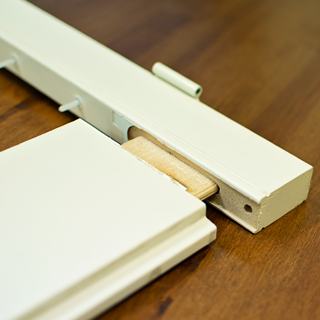By Paul Lisle, Sales Manager USA

What is a mortise and tenon joint?
Mortise and tenon is a type of joint that connects two pieces of wood or other materials. It is one of the strongest joints available and has been used in construction for thousands of years. Mortise and tenon is comprised of two components: the mortise hole and the tenon tongue. The tenon is created on the end, from a solid piece of material, typically using power tools such as back saws our routers, to carve down the exterior material, leaving the “tongue” standing out on the end of the structure. The mortise is carved into the second piece of material to create the hole for the tongue.
In shutters, the tenon is formed on the ends of the top and bottom rail, and fits into the mortise, which is cut into the stiles.
Are there other joint types used by shutter manufacturers?
Many shutter manufacturers assemble their panels using wood dowels. A dowel is a small, cylindrical piece of wood that forms a bridge between two pieces of wood. Manufacturers will use two small dowels to connect the joints on their shutter panels. These two ¼ inch pieces of wood are meant to hold the weight of the entire shutter panel. While wood dowels are inexpensive and easy to produce, they often lead to the shutters sagging and coming apart at the joints.
What are the benefits of a mortise and tenon joint?
Mortise and tenon joints offer more than just a bridge to the rails and stiles with two flimsy ¼ inch dowels. Instead it is an extension of the top and bottom rail fitting into the groove of the stile. This allows the mortise and tenon joint to support a larger amount of weight due to the full rail providing support as opposed to the ¼ inch section of wood used in a dowel. By using mortise and tenon, TWO ensures that our panels will last for a lifetime.







